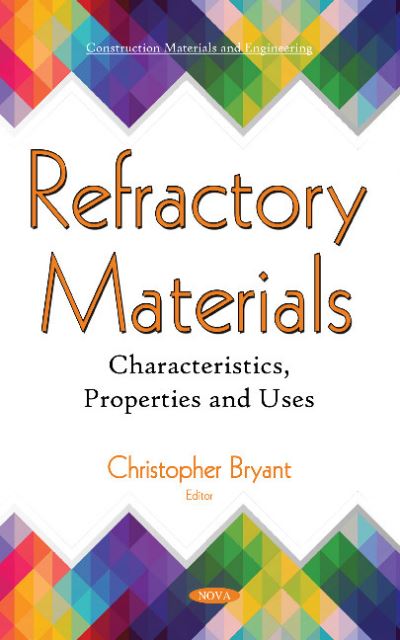
Refractory materials are used in several industries involving very aggressive environments, thus the number of chemical, thermal and physical properties required for a refractory material are high and diverse. In Refractory Materials: Characteristics, Properties and Uses, the authors suggest that the determination of the mineralogical phases amounts is an essential parameter for the design of new refractories matrix to have command over the desired properties and quality of the final product. The subsequent chapter may serve as a guide to the composition- and microstructure-based interpretation of experimental findings in refractory materials. Based on the concepts and refractory materials data provided in this book, taking into account the general issues concerning strength measurements, the reader should be able to realistically assess even such complex quantities as thermal shock resistance parameters. Next, a systematic joint study of the temperature dependences of the isobaric molar heat capacity CP(T) and the volume coefficient of thermal expansion ?(T) of polyatomic solids was carried out on the example of refractory oxide ceramics: periclase, MgO, and corundum, Al2O3. Both ceramics have the widest practical applications and are considered as reference substances, which justifies their choice for research. In the closing chapter, the B-model is applied to a joint study of temperature dependences of the principal thermodynamic functions of the selected refractory oxide ceramics, namely, periclase, MgO, and corundum, Al2O3. Primarily, the isobaric molar heat capacity CP(T), the volume coefficient of thermal expansion ?(T), and their correlation, ?(CP), were investigated between T = 0 and the melting point Tm. Under the B-model control, mutually consistent calorimetric (change in the molar enthalpy, the molar entropy, the reduced thermodynamic potential) and dilatometric (the molar volume, the volume coefficient of thermal expansion) data were obtained and tabulated in the entire solid state range of the ceramics.
| ISBN: | 9781536138627 |
| Publication date: | 2nd July 2018 |
| Author: | Christopher Bryant |
| Publisher: | Nova Science Publishers an imprint of Nova Science Publishers, Inc |
| Format: | Paperback |
| Pagination: | 199 pages |
| Series: | Construction Materials and Engineering |
| Genres: |
Building construction and materials |